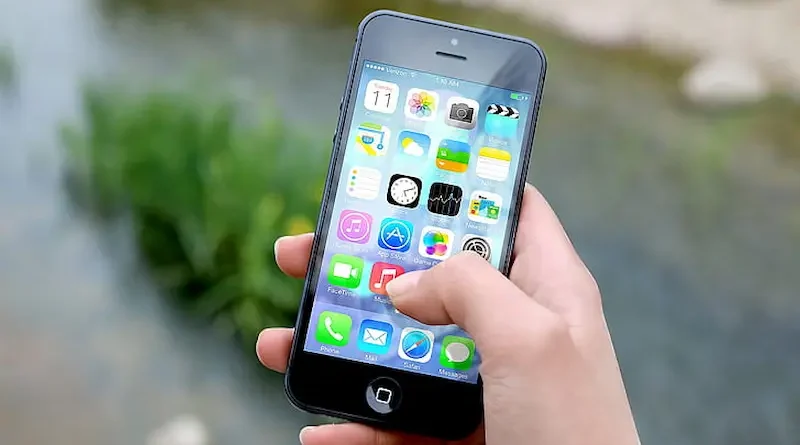CDiPhone: A Complet Guide to Connecting CDs with iPhone
The increasing shift from physical media to digital storage has rendered CDs nearly obsolete. Yet, many users still own personal music collections on compact discs. With Apple’s mobile ecosystem moving toward wireless and cloud-based solutions, accessing CD content on iPhones is not a straightforward process. The term “CDiPhone” has surfaced among users looking to bridge this gap, a concept that implies transferring or interfacing CD data with iOS devices. Although not officially recognized as a product or brand, this term represents a need in the market.
In this article, we’ll cover the technical feasibility, available solutions, hardware requirements, and step-by-step processes to move audio or data from CDs to iPhones.
What Does “CDiPhone” Really Mean?
While there is no official Apple product or third-party peripheral named “CDiPhone,” the phrase refers to:
-
Transferring music from a compact disc to an iPhone.
-
Connecting external CD/DVD drives to an iPhone using adapters.
-
Using third-party apps or cloud tools to manage ripped files from CDs.
The underlying goal is to move CD-based content, primarily music, to iOS without compromising on quality or convenience.
Can You Connect a CD Drive Directly to an iPhone?
Direct USB Support
By design, iPhones do not support CD or DVD drives natively through the Lightning port. However, a few workarounds make this theoretically possible.
Required Tools:
-
Apple Lightning to USB 3 Camera Adapter
-
A powered USB hub (to compensate for the iPhone’s power limitations)
-
External USB CD/DVD drive
Technical Steps:
-
Connect the CD drive to the powered USB hub.
-
Plug the hub into the Apple Lightning to USB adapter.
-
Connect the adapter to the iPhone.
-
Use a file manager or specific app (like VLC for iOS) that supports USB content (if jailbroken).
Limitations:
-
Most iPhones will not recognize CD/DVD file systems directly.
-
File access is limited without jailbreaking.
-
Not all third-party apps offer raw CD file support.
Best Method: Transferring CD Music to iPhone via PC or Mac
This is the most stable, Apple-approved way to bridge CD content to iOS:
Required Software:
-
iTunes (Windows/Mac)
-
Apple Music (macOS Catalina and newer)
-
Any CD ripping software (like Exact Audio Copy, dBpoweramp)
File Formats Supported by iPhone:
-
AAC (.m4a)
-
MP3
-
ALAC (Apple Lossless)
-
AIFF
Step-by-Step Process:
Step 1: Rip CD to Computer
Use CD extraction tools to convert CD audio into digital files. Choose ALAC for lossless quality or MP3 for compatibility.
Step 2: Import to iTunes or Apple Music
Once ripped, drag the files into iTunes or Music Library.
Step 3: Sync with iPhone
-
Connect your iPhone via USB.
-
In iTunes or Finder (macOS), select the device and navigate to the “Music” tab.
-
Choose selected artists/albums/playlists and sync.
Optional: Use Wi-Fi Sync
Enable Wi-Fi syncing to move music wirelessly.
Using Third-Party Apps to Transfer CD Music
Several apps can help manage or play ripped music files on your iPhone:
1. VLC Media Player for iOS
-
Supports FLAC, MP3, WAV, and more.
-
Files can be uploaded via Wi-Fi or cloud.
2. Documents by Readdle
-
File manager with audio player built-in.
-
Works with iCloud, Dropbox, Google Drive.
3. Foobar2000
-
Offers detailed audio playback support.
-
Ideal for FLAC or ALAC files ripped from CD.
4. Evermusic
-
Syncs music from cloud to your iPhone.
-
Supports ID3 tagging and playlists.
Cloud-Based Options to Stream CD Content
For users with large collections, uploading to cloud storage offers cross-device access:
Google Drive / Dropbox
-
Upload ripped files from your PC.
-
Access via their respective iOS apps.
iCloud Drive
-
Sync ripped content to iCloud via Finder or Files app.
Plex
-
Host your music library via Plex Media Server.
-
Stream on iPhone using the Plex app.
Should You Use ALAC or MP3?
While MP3 remains widely supported, ALAC (Apple Lossless Audio Codec) provides higher quality and is optimized for Apple devices.
| Format | Quality | File Size | Ideal For |
|---|---|---|---|
| MP3 | Compressed | Small | Casual listening |
| ALAC | Lossless | Large | Audiophile users |
| AAC | Medium-Loss | Moderate | Apple ecosystem |
Precautions When Using Adapters and Drives
Voltage Concerns
iPhones do not provide sufficient power to run external CD drives directly. Always use a powered USB hub.
File System Incompatibility
iOS cannot read the ISO 9660 or UDF file systems used by most CDs. Ripping the content on a computer is mandatory.
Jailbreaking Risks
While jailbreaking may allow filesystem access, it compromises device security and voids warranties.
Alternatives to CDs for iPhone Users
Given the complications of CD usage with iOS, the following are more streamlined options:
-
Apple Music Subscription: Offers most commercial albums in high quality.
-
Spotify / Tidal / YouTube Music: Wide catalog access with download options.
-
Vinyl-to-Digital Services: For analog users, services exist that digitize music into iPhone-friendly formats.
FAQs
Can I play a CD directly on my iPhone using an external drive?
No, iPhones cannot natively read CDs. You’ll need a computer to rip the content first.
Is there a CDiPhone app?
As of now, there is no app by that name. The concept remains user-defined or speculative.
What’s the best format for iPhone music?
AAC or ALAC are ideal for Apple environments. ALAC retains original CD quality.
Conclusion
While “CDiPhone” may not exist as a concrete product, the demand behind the name highlights a practical need: integrating old media into modern ecosystems. With the right tools, apps, and workflows, users can successfully access and enjoy CD content on iPhones without depending on streaming platforms.
Using a structured process involving CD ripping, file format conversion, and syncing via iTunes or cloud, users can retain control over their music library, no matter how old-school the source might be.

